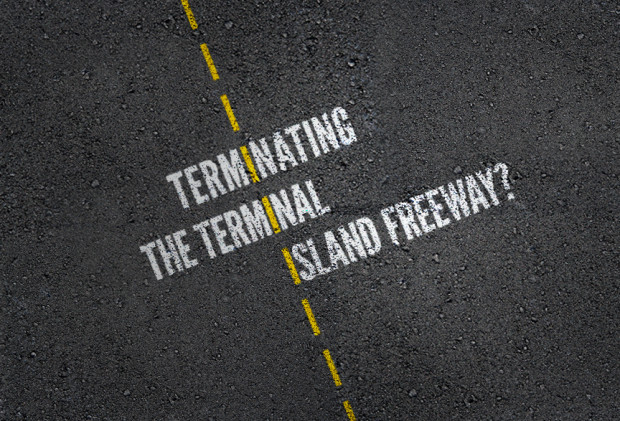The Congress for the New Urbanism (CNU)—the country’s premiere organization which is founded on creating walkable, neighborhood-based development—released its 2014 “Freeways Without Futures” report, listing Long Beach’s own Terminal Island (TI) Freeway amongst its top 10 prospects for removal.
Calling it a “perfect example of obsolete infrastructure,” CNU echoes the time-consuming efforts put forth by local nonprofit City Fabrick and its founder Brian Ulaszewski’s efforts to remove TI since 2010.
“There’s much interest in reimagining perhaps the most impacting infrastructure in West Long Beach as something that serves the community,” Ulaszewski said.
The project is simple: the existing northern length of the freeway, following the development of the 20-mile long Alameda Corridor and the still-underway modernization of the Intermodal Container Transfer Facility (ICTF) by Union Pacific Railroad, is redundant. Not only do shipping companies use it less and less, the traffic itself matches those of 4th Street along Retro Row (some 13,700 AADT). And if plans for ICTF follow through, you can drop that down to 8,700 AADT–less than the traffic 3rd Street receives in the quiet neighborhood of Alamitos Beach.
In this case—following other successful freeway removal projects such as those done in Portland (Harbor Drive Freeway), Boston (Central Artery), Seoul (Cheonggye Expressway), and San Francisco (Hayes Valley)—removal seems sensible.
This is not to mention the overwhelming evidence in regard to the benefits of freeway removals, including:
- The traffic congestion feared by having a lesser roadway capacity can be absorbed by alternate routes (the aforementioned Hayes Valley in San Francisco, where part of the Central Freeway was removed, is a prime example of this);
- Fewer people use their cars when roadway capacity is lessened
- The removal of certain spans of roads does not mandate nor necessarily guarantee a needed shift in the entirety of transit paths (regard the removal of San Francisco’s Embarcadero Freeway);
- And the excessive right-of-way paths can be altered into public, open space that generate activity on multiple levels–communal, civic, commercial–rather than simply diminish transit
Even further—and probably more importantly—are the benefits to be received by the West Side citizens themselves. The residents of West Long Beach have a paltry acre per 1,000 residents or what amounts to about a soccer field. This is far below the National Recreation and Parks Association’s standards for a Healthy City, set at a minimum of 10 acres of parks for every 1,000 of its residents.

With overwhelming evidence that suggests accessibility to green space not just encourages physical activity but actually contributes to the overall health of a community (lower rates of respiratory disease, cardiovascular disease, on and on), this project is both reasonable and ethical in its development given that it will increase park space on the West Side by some 50% with the addition of 20 to 30 acres of park space. This is not to mention the elimination of many trucks passing by west side schools, specifically Cabrillo High, Reid High, and particularly Hudson Elementary, which sits toe-to-toe with TI’s edge.
After multiple uphill battles in trying to gain money, last October proved fruitful for the project. Long Beach received $250K from CalTrans to begin studying the full implications of the removal's scope, with broadening hopes that the project will become more tangible.
“The project would not be where it is without the cooperation of a broad constituency including residents, school district, port interests and city officials. This continued partnership will lead to its ultimate success,” Ulaszewski said.







